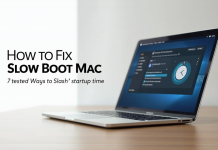Do you want to connect different people from either the same country or from different parts of the world, and want to make them appear as if real in your video conference room? Well, meet the Multipoint Control Unit, the absolute hero. Now, forget the days with unsteady internet and just two-faced video calls, because this virtual world needs the absolute power of a Multipoint Control Unit.
Topic Covered: Videoconferencing, telepresence, MCU bridge, Bandwidth management, Network infrastructure, Hardware MCU, Cloud MCU, Security Protocols, Unified Communications, Meeting room solutions, Quality of Service (QOS).
Table of Contents
What exactly is a Multipoint Control system?
In this era of business world, Video conferencing has become a necessity for all and if it comes with the luxury and ease of making multiple people connect from all parts of the world and make them part of your daily meetings then, the businesses would flourish with more good results with better connectivity and greater teams with more number of people connected through a single screen.
Have you imagined that without the Multipoint control unit or multipoint control system, your meetings would be simple video calls consisting of just two people?
The Multipoint control unit separates individual voices and videos of different people and then distributes them individually in such a way that everyone sees and hears each other easily.
WHY is using a MultiPoint Control System Important?
Before the MCU, video conferencing was limited to two-way (point-to-point) connections. MCU has revolutionised the era of modern communication. It has given us the ultimate meeting room solution. You can connect people from different parts of the world. A multipoint control system makes the audio coming from every individual apparent.
Enhanced Efficiency and increased reliability
Bandwidth Management
It intelligently manages and combines the different streams, simultaneously, reducing the overall bandwidth consumption for each participant. As they only need to receive one composite stream rather than individual ones.
Network Infrastructure
It is the foundation for all digital activity, allowing devices, people to connect efficiently, giving the ultimate meeting room solution for all of the video conferencing problems.
At its core, a network infrastructure is built upon three main pillars: hardware, software, and services.
Hardware forms the physical backbone of the Multipoint control unit, including routers that steer data between different networks and switches that link devices within a single network. Servers act as central hubs for storing data and running applications. Firewalls stand guard as crucial security barriers, while cables provide the physical connections, complemented by wireless access points for Wi-Fi.
The network’s intelligence comes from its software. This includes network operating systems that manage resources, network management tools for monitoring and control, and security applications like antivirus and intrusion detection to protect against threats.
Finally, services tie everything together. These encompass vital Internet connectivity, flexible cloud services, and IP and HTTP, which are the fundamental rules governing how data is exchanged. Moreover, all the security protocols are then followed.
Unified Communications
Unified Communications (UC) aims to forge a more integrated, streamlined, and intuitive communication environment within a company. This, in turn, ultimately cultivates enhanced output, strengthened teamwork, and greater organisational responsiveness.
Multipoint Control Unit Bridge (MCU Bridge)
It is named as Multipoint Control Unit bridge due to it’s connecting properties, which means functioning in such a way that connects separate audio and video coming from electronic devices (laptops, phones, iPads) of different people and displaying them onto single screen that many people at a time can view other people from various areas at the same time through one big screen in their meeting rooms particularly at the offices.
Characteristics of the MCU bridge
- Audio mixing: it takes all the individual audio feeds, blends them into one clear sound, and sends that combined audio back to everyone. This process includes the following:
- Removing echoes prevents you from hearing your voice back.
- Filtering out background noise: which means you don’t get disturbed during your meetings by any kind of external noise.
Perfect Synchronization
The Multipoint Control Unit makes sure that what you see and hear is perfectly synchronised so that you are not embarrassed in front of your clients, and it prevents you from the awkward delays. Basically, it assures you of a smooth telepresence in front of the virtual world.
Video Quality Adjustment
It also adjusts video quality to match everyone’s internet speed, ensuring a smooth experience even with different connections. It intelligently manages and combines the various streams, simultaneously, reducing the overall bandwidth consumption.
Extraordinary Security Features
It intelligently manages and combines the different streams, simultaneously, reducing the overall bandwidth consumption.
How to Set Up a Multipoint Control Unit System
Setting up a multipoint control unit can be complex, but following a structured plan can ensure smooth implementation.
Here are the following key steps that you should keep in mind in order to set up the multipoint control unit at your workspace, making telepresence easier for yourself and your clients.
1. Planning and Preparation
Define your Needs
Start by asking yourself what the things are that are essential for the setup (i.e, your multipoint control unit setup). Clearly outline how many users, zones your system will manage? How many people do you want to connect with at the same time?
Assess your Network
Check your network to make sure it can handle your new Multipoint control unit system. Furthermore, ensure that your internet speed (bandwidth), reliable connections, and network settings are all correct. Special attention has to be paid to IP addresses and Quality of Service (QOS) when you are using real-time data like video, which needs constant performance.
Physical Setup (if applicable )
If your system involves physical components, plan their installation. This includes setting up the central unit, running all necessary cables (power, control wires) to each controlled point, and installing client devices such as monitors, cameras, microphones, and sensors, making their audio clear and videos quite visible, like free of any external distortion, to run the meetings really smoothly.
2. Configuration and Software Setup
- With the physical components in place, the next step is to prepare the system and install the necessary software.
- First, power everything on and ensure connectivity.
- Plug in your central unit and connect it to the network, then power up all the devices you want to control.
Connectivity test
- A quick connectivity test can confirm they’re all communicating. Next, access the system’s Multipoint Control Unit interface.
- Crucially, always change the default login credentials right away to protect your system.
3. Testing and Optimization
Testing
- Once everything’s set up, it’s time to test and fine-tune your system for peak performance thoroughly.
- Test its functionality methodically. Check every controlled point and feature. Can you switch lights on and off in specific areas? Are all participants clearly visible and audible during a multipoint video conference?
Performance tuning
Next, focus on performance tuning. Keep an eye on your network’s bandwidth (internet speed), especially if you’re using video conferencing. If you run into any performance interruption, try adjusting quality settings, like video resolution. Ultimately, you would be able to optimise your system settings to match your specific environment perfectly.
By following this multipoint control unit setup and configuration guide, you can find all the solutions to your meeting room problems.
FAQs
An MCU connects multiple video conferencing participants into one call by managing, processing, and redistributing audio/video streams from all endpoints.
You need a high-performance server, stable internet, compatible video conferencing endpoints, and MCU software (proprietary or open-source) for setup.
Set network parameters, choose compatible codecs, define conference settings, and monitor performance through the admin interface or dashboard.
Yes, many MCUs support integration with cloud platforms using protocols like SIP or WebRTC, enabling hybrid video conferencing setups.
Common issues include network lag, codec mismatches, or firewall blocks. These can be resolved with proper configuration, protocol support, and updates.










